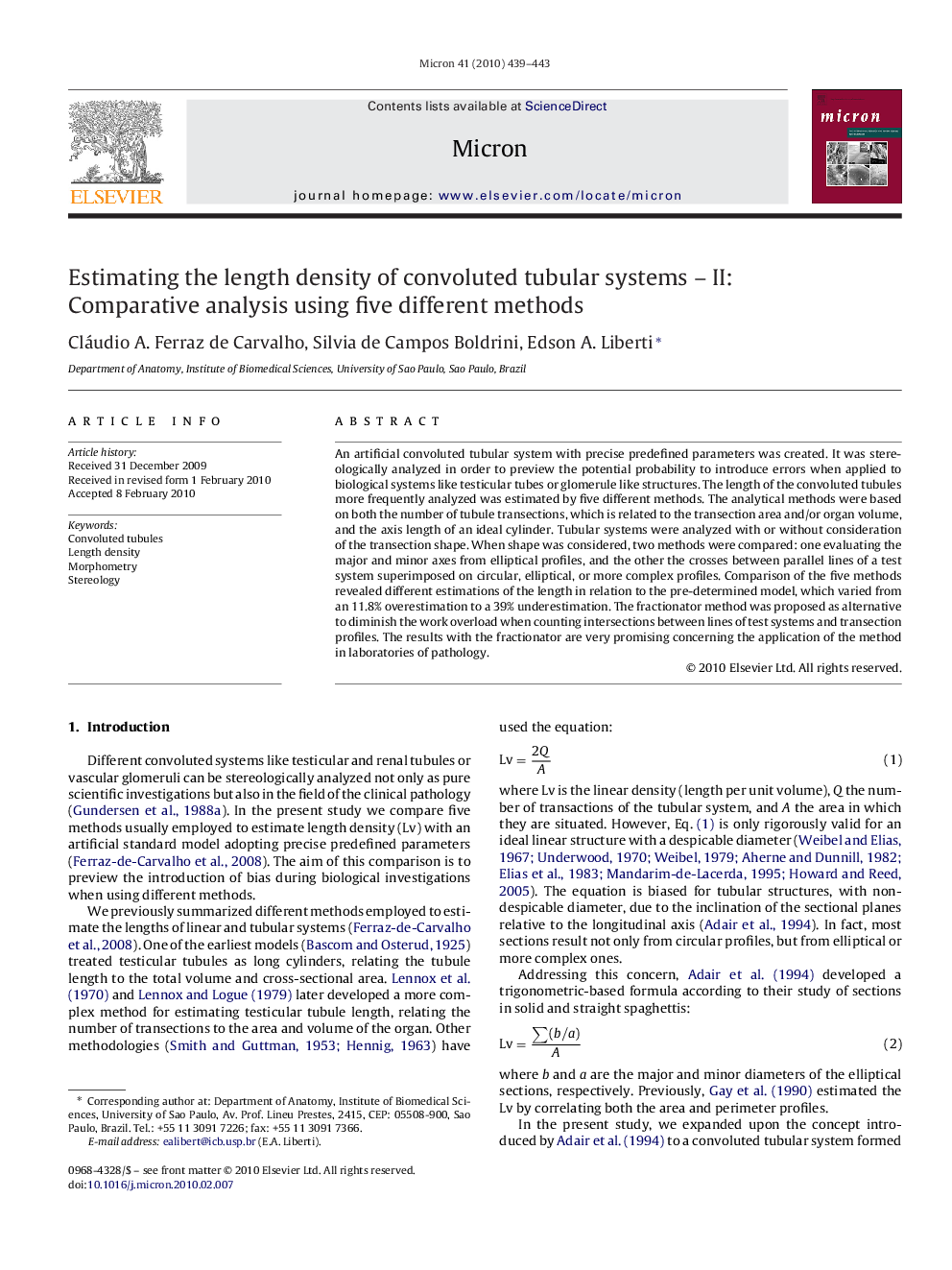| Article ID | Journal | Published Year | Pages | File Type |
|---|---|---|---|---|
| 1589465 | Micron | 2010 | 5 Pages |
An artificial convoluted tubular system with precise predefined parameters was created. It was stereologically analyzed in order to preview the potential probability to introduce errors when applied to biological systems like testicular tubes or glomerule like structures. The length of the convoluted tubules more frequently analyzed was estimated by five different methods. The analytical methods were based on both the number of tubule transections, which is related to the transection area and/or organ volume, and the axis length of an ideal cylinder. Tubular systems were analyzed with or without consideration of the transection shape. When shape was considered, two methods were compared: one evaluating the major and minor axes from elliptical profiles, and the other the crosses between parallel lines of a test system superimposed on circular, elliptical, or more complex profiles. Comparison of the five methods revealed different estimations of the length in relation to the pre-determined model, which varied from an 11.8% overestimation to a 39% underestimation. The fractionator method was proposed as alternative to diminish the work overload when counting intersections between lines of test systems and transection profiles. The results with the fractionator are very promising concerning the application of the method in laboratories of pathology.
